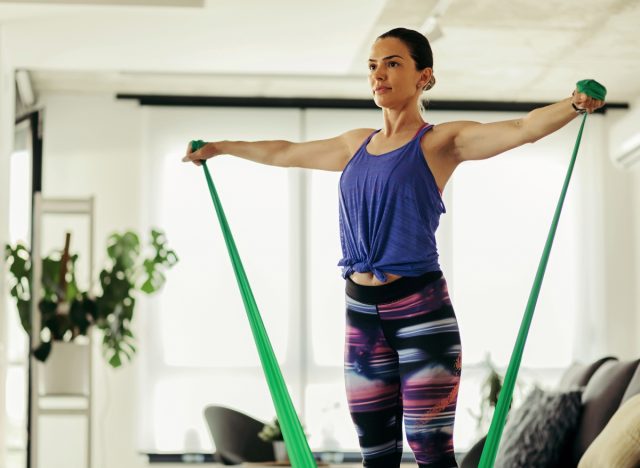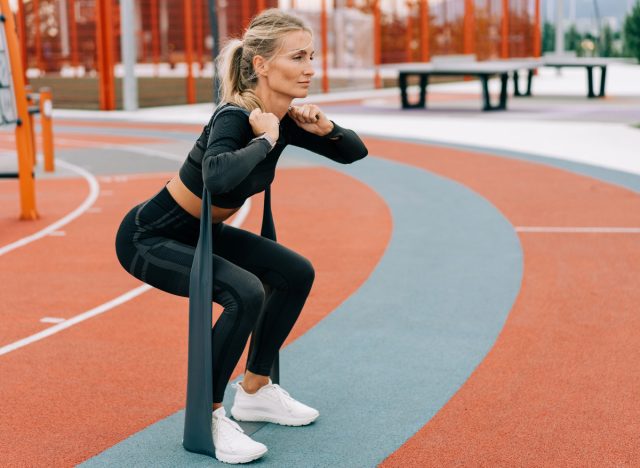6 Mistakes You're Making with Resistance Band Training—and How to Fix Them

Resistance bands can be an awesome addition to your workout. They help improve strength, muscle, balance, flexibility, and functional fitness. Bands can also make your workout more challenging. Plus, they're easy to take on the go, so you can train wherever you are. One caveat? Before you begin training, it's important to know the most common mistakes people make with resistance bands—and how to fix them.
Remember that proper technique prevents injury while working out with resistance bands. "Unlike other equipment, resistance bands create tension by the force we create against them," explains Ash Wilking, CPT and Tonal strength coach. "Therefore, if [used] ineffectively, they can slip, over-engage, and potentially limit the proper range of motion and movement."
By learning the common mistakes people make with resistance band training, you'll help avoid injury and maximize the effectiveness of your workouts.
Not using the appropriate resistance

Selecting the appropriate amount of resistance is essential to achieving your desired results. Larger muscles, for instance, require more resistance, while smaller muscles, like in the shoulder complex, may call for lighter resistance.
"Choosing the appropriate resistance will absolutely depend on [your] current fitness level, technique, and range of motion," Wilking tells us. "It is best to start with a lighter band to assess the above before adding additional resistance. Keeping track of which bands you use for which movements will help ensure efficient and successful workouts in the future."
Not knowing the required range of motion

Knowing the proper range of motion for each exercise is crucial to pinpointing how much resistance you can add.
"It's important to remember that the resistance will get heavier as the band's tension increases. Therefore, overloading the concentric phase of the movement," Wilking explains. "Having smaller and longer resistance bands and various weights will allow you to choose both the correct resistance and the correct length of the band."
Not using correct form

No matter what exercise you're doing or fitness tools you're training with, using correct form should not be overlooked.
"Understanding the exercise [you] are trying to achieve will help [you] understand the movement pattern once it is loaded," Wilking points out. "Resistance bands will create a different type of tension than a cable machine or free dumbbells. When adding resistance bands to the exercise, [you] must ensure that [you] are able to access the same movement pattern.
Not considering the speed in each exercise

Switching up the resistance throughout an exercise will also lead to a change in effort.
"It's possible that [you] focus on the exertion of extending the band (concentric phase) but don't control the band as it shortens (eccentric)," says Wilking. "By allowing the band to pull [you] out quickly, [you] not only lose the opportunity to strengthen this portion of the exercise but also open [yourself] up to the risk of injury."
Not keeping tension on the band

The band's tension between each rep can be compromised depending on the exercise you perform and how long the resistance band is.
"[You] want to ensure there's resistance throughout the entire range of the exercise, both to ensure [you're] getting the most out of the workout as well as avoiding injury," Wilking notes. "Starting an exercise at full force without tension can create a dramatic pull once the resistance is added."
Not engaging your core

When working with resistance bands, firing up your core is key.
"It's vital to keep [your] core engaged to ensure the anchor point doesn't move throughout the exercise," says Wilking. "As always, [you] want to avoid injury, which core engagement will help reduce, but also, [you] add core strength even if [you're] not focused on a core exercise."









